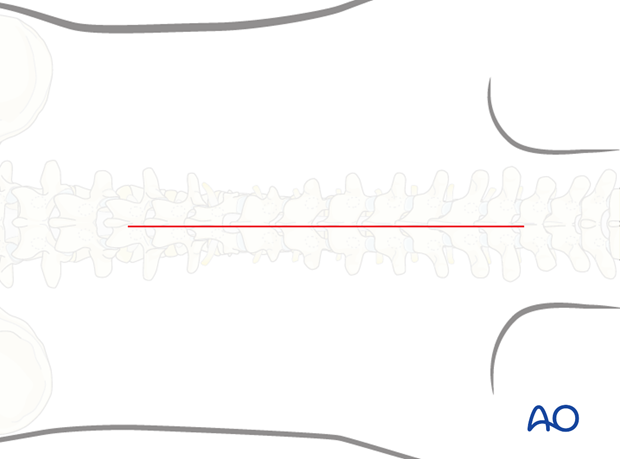Posterior approach
1. Skin incision
A straight incision is made from the planned UIV to the planned LIV along the midline.

2. Subperiosteal dissection
A subperiosteal dissection is performed bilaterally along the spinous process, the laminae out to the tips of the transverse processes of all the levels.
The use of a subperiosteal dissection can minimize bleeding and muscle damage. The use of self-retaining retractors aids in vertebra exposure by holding the musculature off to the side. In addition, packing sponges can help with hemostasis.
Localizing radiograph or image intensifier check of spinal level should be obtained.

The use of self-retaining retractors aids in vertebra exposure by holding the musculature off to the side. In addition, packing sponges can help with hemostasis.
Localizing radiograph or image intensifier check of spinal level should be obtained.
The facet joint capsules should also be removed to expose the joints.

3. Closure
Water tight closure of the fascial layer is performed with continuous or interrupted fascial sutures.

A subfascial and/or subcutaneous drain is inserted.

The subcutaneous layers and skin are sutured.














